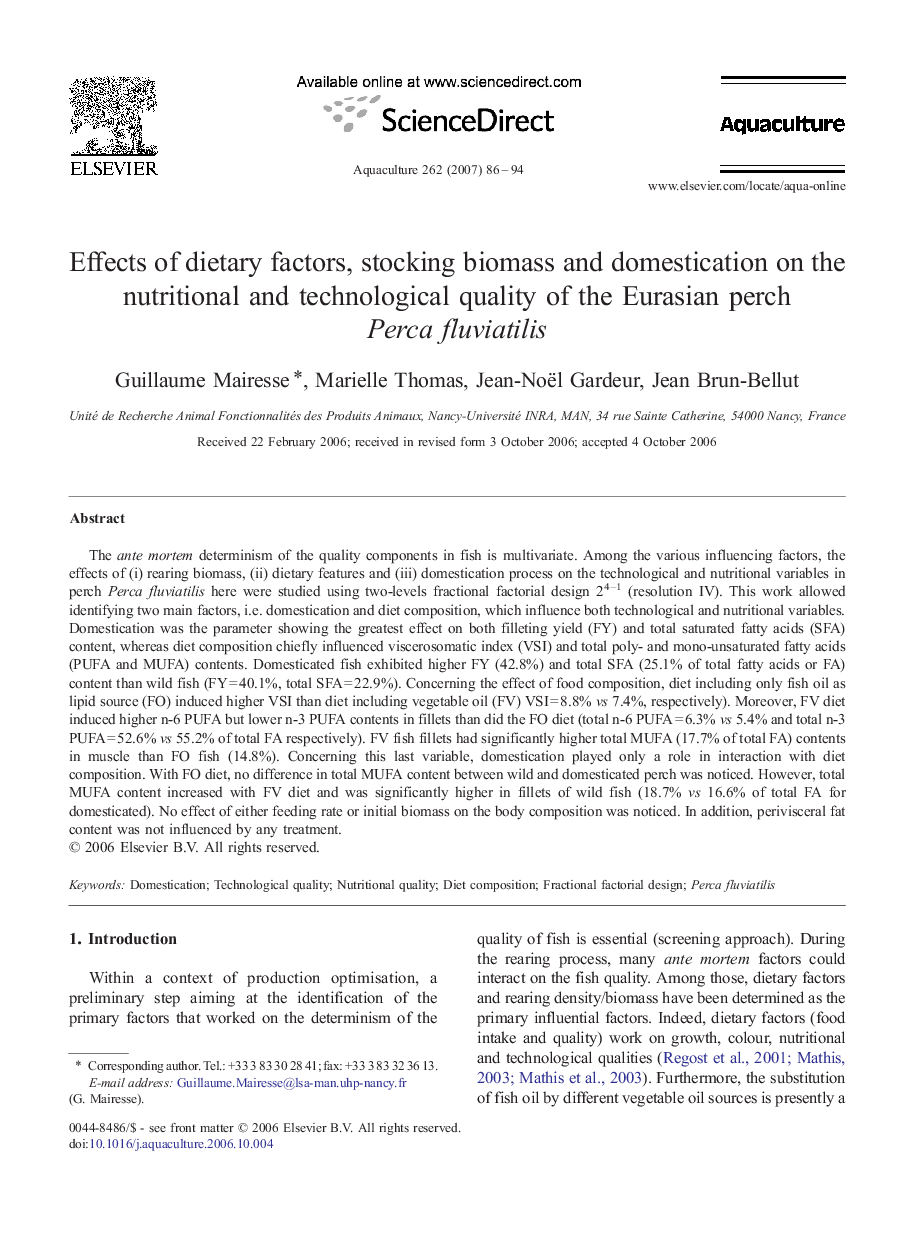| کد مقاله | کد نشریه | سال انتشار | مقاله انگلیسی | نسخه تمام متن |
|---|---|---|---|---|
| 2425701 | 1105346 | 2007 | 9 صفحه PDF | دانلود رایگان |

The ante mortem determinism of the quality components in fish is multivariate. Among the various influencing factors, the effects of (i) rearing biomass, (ii) dietary features and (iii) domestication process on the technological and nutritional variables in perch Perca fluviatilis here were studied using two-levels fractional factorial design 24–1 (resolution IV). This work allowed identifying two main factors, i.e. domestication and diet composition, which influence both technological and nutritional variables. Domestication was the parameter showing the greatest effect on both filleting yield (FY) and total saturated fatty acids (SFA) content, whereas diet composition chiefly influenced viscerosomatic index (VSI) and total poly- and mono-unsaturated fatty acids (PUFA and MUFA) contents. Domesticated fish exhibited higher FY (42.8%) and total SFA (25.1% of total fatty acids or FA) content than wild fish (FY = 40.1%, total SFA = 22.9%). Concerning the effect of food composition, diet including only fish oil as lipid source (FO) induced higher VSI than diet including vegetable oil (FV) VSI = 8.8% vs 7.4%, respectively). Moreover, FV diet induced higher n-6 PUFA but lower n-3 PUFA contents in fillets than did the FO diet (total n-6 PUFA = 6.3% vs 5.4% and total n-3 PUFA = 52.6% vs 55.2% of total FA respectively). FV fish fillets had significantly higher total MUFA (17.7% of total FA) contents in muscle than FO fish (14.8%). Concerning this last variable, domestication played only a role in interaction with diet composition. With FO diet, no difference in total MUFA content between wild and domesticated perch was noticed. However, total MUFA content increased with FV diet and was significantly higher in fillets of wild fish (18.7% vs 16.6% of total FA for domesticated). No effect of either feeding rate or initial biomass on the body composition was noticed. In addition, perivisceral fat content was not influenced by any treatment.
Journal: Aquaculture - Volume 262, Issue 1, 14 February 2007, Pages 86–94